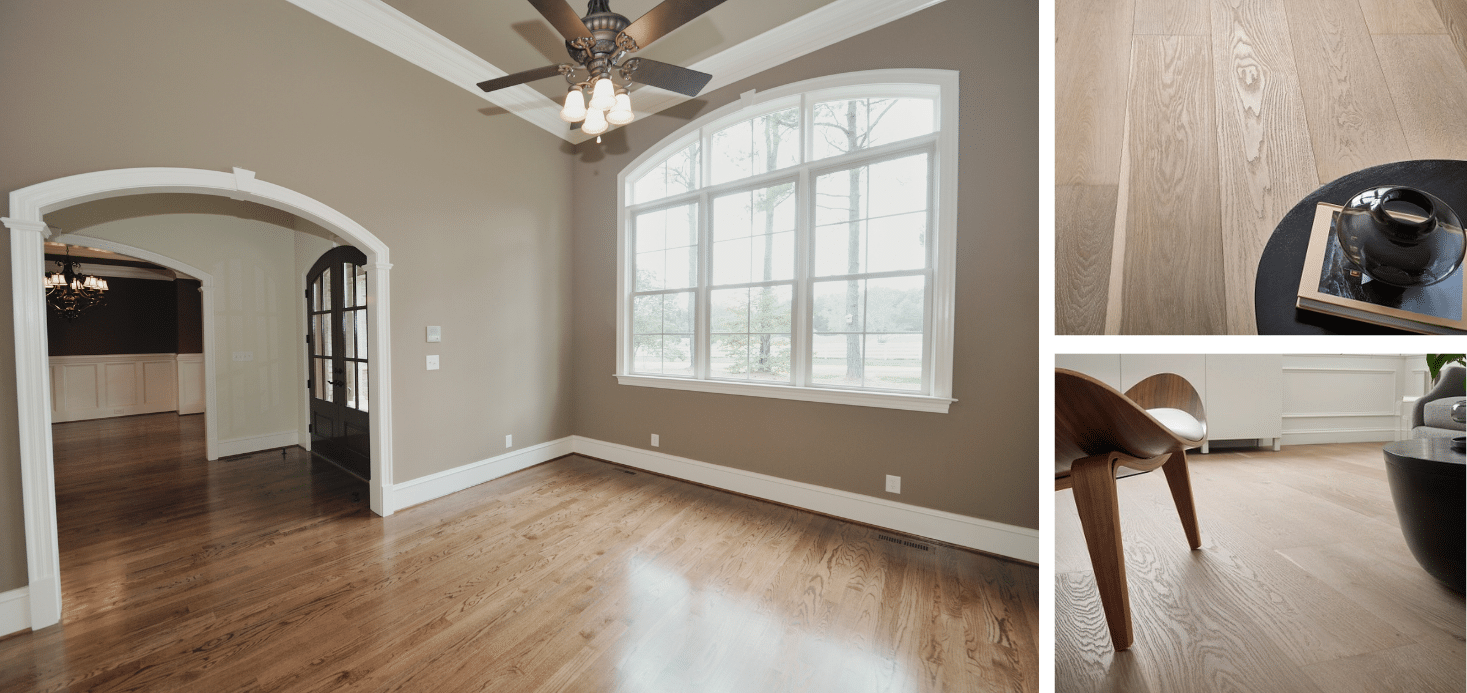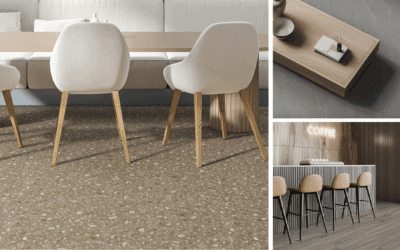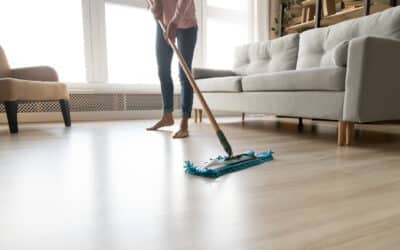Prefinished hardwood flooring is a smart investment that increases your property value and provides your space with a durable and timeless aesthetic.
Compared to a floor that’s finished on site, a prefinished (factory-finished) hardwood floor will have a thicker, harder finish and a finish warranty. This means your floor will be extra resilient against scratches and scuffs with the added protection of the warranty.
However, it still pays to know what to expect from your prefinished hardwood flooring before it’s installed, so you’re 100% prepared and fully satisfied with your floor.
Here’s 10 things you need to know about prefinished floors before installation.
- There Will Be Natural Variation Between Boards
Hardwood flooring’s natural beauty makes it a desirable addition to your home. Because each board is distinct, you will have varying grain patterns from one board to the next.
Each plank also varies in character, which includes mineral streaks and knots. The character you can expect depends on the species and the flooring grade you choose.
In oak, for example, higher grades, such as clear and select, have less character and a more uniform appearance than #1 Common.
Opting for a clear sealer and finish will showcase the natural splendor of the floor and its unique features. You can apply stain for a more consistent and uniform appearance and less visible character.
- Samples Will Vary in Appearance
The flooring samples you select to bring home are typically less than two square feet. Many samples have aged for an undetermined amount of time and in varying degrees of exposure, so don’t expect your sample to exhibit all the possible color and grain variations you will see after your floor’s installed.
- The Possibility of High Edges AKA “Overwood”
Overwood is when boards sit higher than others after installation. It can be caused by irregularities in the floor joists, sub-floor, the wood flooring, installation techniques or a combination of these factors.
One drawback with a prefinished floor is you can’t sand the boards to the exact same level after installation.
- Wood Ages with Light and Time
All wood will change in color with exposure to light (both natural and artificial). Most exotic imports and American cherry are particularly sensitive to light, especially sunlight.
One way you can prevent the noticeable effects of aging is to stain the wood. Staining the wood makes the natural aging from sunlight less apparent.
- Your Floor Won’t Have a “Furniture Finish”
This may be obvious: Never apply a furniture finish on your hardwood floors. Furniture is made from a small quantity of relatively high-grade wood. Furniture finish looks nice and is very smooth, but it can’t handle the demands of foot traffic. Floor finishes feel rougher and don’t provide the same look as floor finish because they’re formulated to withstand greater wear and tear.
- Know the Warranty & How to Care for Your Prefinished Hardwood Floors
Making the investment in beautiful, prefinished hardwood flooring means that you should become familiar with and observe all floor care and warranty information. You’re the only one who can maintain your flooring and have it looking its best now and in the long term. We generally recommend Basic Coatings Squeaky Clean and a microfiber mop as part of a regular cleaning routine for prefinished hardwood floors.
- Prevent Gaps and Separation Between Boards
Gaps between boards are a common heating season issue caused as your floor becomes dryer and shrinks. One way to minimize gapping is to maintain humidity in your home. The National Wood Flooring Association recommends 35-55% relative humidity year-round.
- Each Floor is Unique
No two floors are ever the same. When a flooring professional inspects your floor, it stands on its own merits based on industry standards, not how it compares to another floor.
- Prevent Cupping at the Source
If cupping occurs, the floor has taken on moisture. The source could be a wet basement or crawl space, a structural or plumbing problem, or too much humidity. The solution is to find the source of moisture and correct it. This may take considerable time depending on the severity of the problem.
- Putty and Filler
Installers use putty and/or filler on every hardwood floor. Unfinished floors are filled and/or puttied before the finish is applied. Because factory-finished floors must be installed with the finish applied, colored putty is used to conceal nail holes.
- How to Reasonably Inspect a Wood Floor.
The accepted point of view from which to inspect a wood floor is from a standing position under normal lighting. Searching for imperfections on your hands and knees or at a particular light angle is not a practical means for determining acceptance of a hardwood floor.
Summary
Before you install prefinished hardwood flooring, remember that samples may not fully reflect the final installed appearance. Be prepared for potential board height differences known as “overwood,” and understand that wood changes over time with light exposure. Your floors will exhibit a different finish from furniture and require specific care.
To maintain the life of your flooring, be aware of warranty terms and effective cleaning methods like using the right cleaner and a microfiber mop. Anticipate shifts in the wood from moisture that can cause gaps or cupping. And when inspecting your flooring, don’t take out a magnifying glass and look for defects. Inspect it from a standing position in normal lighting to get a practical and realistic view of its condition and appearance.



